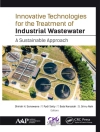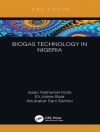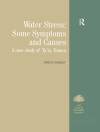Arsenic contamination in drinking water and crops is a major health issue in many countries worldwide, threatening the health of millions of people due to arsenic’s toxicity and carcinogenicity. This edited volume brings together a diverse group of environmental science, sustainability and health researchers to address the challenges posed by arsenic contamination. The book sheds light on this global environmental issue and proposes solutions to aquatic contamination through multi-disciplinary sustainable approaches and case studies from different parts of the world. The chapters contained here present the status quo in different parts of the world and provide essential information on arsenic exposure risks for humans as well as possible measures for tackling arsenic poisoning. The mechanisms of arsenic uptake, translocation and distribution in plants and grains are also explained. In closing, the book reviews a variety of prospective sustainable solutions to the problem of arsenic accumulation in soil and water.
The book is comprised of three sections. The first section describes the routes of exposure to environmental arsenic and its transport in soil and aquatic ecosystems. The second section explains the health risks linked to arsenic exposure in food and the environment. The third section addresses sustainable arsenic contamination mitigation strategies using the potential applications of recent biological technology such as biotechnology, bioremediation, phytoremediation, biochar, absorbent, genetic engineering, and nanotechnology approaches. The book is intended for a broad audience including researchers, scientists, and readers with diverse backgrounds.
Jadual kandungan
Section 1 Source and distribution of arsenic in soil and water ecosystem.- 1 Analytical tools for Arsenic speciation in soil, water, and plant.- 2 Source and distribution of Arsenic in soil and water ecosystem.- 3 The dichotomy of the journey of arsenic from the soil uptake in plants and down into water.- 4 Source generation of arsenic species and spatial distribution in benthic ecosystem.- Section 2 Health risks linked to arsenic exposure in food and the environment.- 5 Arsenic exposure through dietary intake and associated health hazards.- 6 Arsenic contamination of soil and water and related bio-hazards in Bangladesh.- 7 Arsenic contamination in drinking water and health.- Section 3 Sustainable mitigation strategies.- 8 Towards sustainable arsenic mitigation in Bangladesh and Nepal.- 9 Biotechnological approaches in remediation of arsenic from soil and water.- 10 Microbial removal of arsenic.- 11 Treatment and operational efficiencies of several natural and synthetic sands on treating arsenic through adsorption.- 12 Arsenic mitigation from contaminated ground water through chemical and biological processes.- 13 Soil reclamation and crop production in arsenic contaminated area using biochar and mycorrhiza.- 14 Techniques of arsenic remediation on household and commercial scale.
Mengenai Pengarang
Dr. Nitish Kumar
Dr. Nitish Kumar is Senior Assistant Professor at the Department of Biotechnology, Central University of South Bihar, Gaya, Bihar, India. Dr. Kumar completed his doctoral research at the Council of Scientific & Industrial Research–Central Salt & Marine Chemicals Research Institute, Bhavnagar, Gujarat, India. He has published more than 70 research articles in leading international and national journals, more than 20 book chapters and 10 books with Springer and Taylor & Francis. He has wide area of research experience in environmental Biotechnology and currently working on Arsenic remediation by the application of different biotechnological techniques. He has received many awards/fellowships/projects from various organizations, for example, the CSIR, DBT, ICAR and SERB-DST, BRNS-BARC, among others. He is an active reviewer for journals, including Biotechnology Reports, Aquatic Botany.
Dr. Muhammad Zaffar Hashmi
Dr. Muhammad Zaffar Hashmi is an Associate Professor of Environmental Science at Institute of Molecular Biology and Biotechnology, The University of Lahore, Pakistan. Dr. Hashmi works on multiple water, soil, air and health related issues, and has expertise in developing environmentally sustainable and feasible technologies.
Dr. Shuhong Wang
Dr. Shuhong Wang is Professor of Environmental Geotechnical Engineering at the Department of Civil Engineering, College of Resource and Civil Engineering, Northeastern University (NEU), China. He has published 1 book with Elsevier and several SCI papers.












